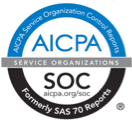My last blog post was about keeping technology simple, which focused on the importance of leveraging technology solutions that improve the customer experience and enable the front line associates to deliver outstanding service. The most critical, and often lacking enabler to delivering a strong ROI and realizing the full potential of your technology is an intense and disciplined focus on your business processes, which has inspired this blog post.
Customer-Centric Process Design
Foremost, all processes should have customers top-of-mind. After all, contact centers exist to serve your customers. As you institute processes, consider how they affect the customer experience. Question and challenge any processes that do not ultimately improve the customer experience. Think through all the “what if” scenarios of a customer’s interaction and be sure you can effectively address all of those situations. Many organizations say they have solid “processes” in place, but I frequently find that they have only addressed what we call the “happy path.” The moments where you can truly differentiate yourself in the marketplace is when the front line associates are prepared to “wow” the customer by resolving those messy, complex situations as quickly as possible with minimal effort by the customer. To accomplish this wow-factor, you must brainstorm all of the various situations and use cases to ensure you have a customer-centric, technology-enabled solution for all of them.
A great example of this is when wait times are long and the technology offers the customer an option to maintain their place in-line and be called back when an agent becomes available. This can be a big win for the customer because it clearly demonstrates that you value their time and want to minimize the impact of a less-than-desirable situation. What happens if the customer is not available at the time of the callback? While companies who implement these solutions are well intended, they completely missed the critical step of comprehensive, customer-centric process design. Effectively achieving the desired outcome, such as calling the customer back when promised, requires a dedicated focus on the comprehensive design of the business rules and operational processes, along with a tight alignment with your workforce management team.
Training
When Customer Service new hires go through training, they typically spend at least 60 – 70 percent of their time learning how to use the technology and how those systems interface with the other internal teams. A comprehensive review of an organization’s new hire curriculum is a remarkable indicator of their dedication in delivering a world-class customer experience and how well the systems and processes support that vision. Best-in-class organizations focus the majority of their valuable training time to clearly articulate their value proposition, demonstrate how their processes and systems support that vision and role play customer scenarios to enable them to deliver against that promise. They also enable “Voice of the Customer” feedback mechanisms and two-way dialog into their training programs.
On-going development is also critical to providing the level of service that customers expect and deserve. This can be seen in the Workforce Management models as well as in the coaching and calibration processes. The ultimate goal of an effective training program is to ensure the front line associates clearly know what it takes to deliver an excellent customer experience and have the processes, tools and ongoing support to deliver.
Solving the Problem Quickly and with Minimal Customer Effort
This is what every customer strives for – and only a few companies deliver on. While there are certainly some factors outside of the organizations’ control, the vast majority of this can be accomplished by having the right culture, technology, and processes in place. Even in industries with extensive regulatory and privacy restrictions, the processes can be designed in such a way to minimize the impact to the customer. For example, customers have come to expect and appreciate the security questions at the beginning of the call to protect their account. However, many companies handle this in a highly scripted, robotic way which results in a very transactional feel to the call. The key to solving the customers’ issue quickly, effectively and with minimal customer effort is to enable the associates with the right set of information, tools, and processes coupled with the right set of metrics to drive the desired experience.
Speaking of metrics, we also help our clients strike the right balance of reducing average handle time (AHT) and increasing the first-call resolution. We frequently hear from contact center leaders that these goals are in conflict with one another, but both can be accomplished if approached in the right way. Reducing AHT is not about talking faster or rushing the customer; it’s about giving the front line associates the right tools, access to information and training for them to handle the call effectively. Technology solutions are a key enabler to accomplishing this goal but must be implemented with the customer and front line associate in the center of the design process.
Where else should simplicity reign in contact centers? Comment below, on social media or directly.




